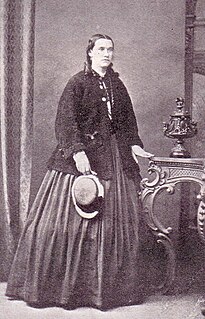Catherine-Ann MacPhee is a Scottish Gaelic singer.

Mill a h-Uile Rud is a Seattle-based band who sing in Scottish Gaelic.
Fear a' Bhàta is a Scots Gaelic song from the late 18th century, written by Sìne NicFhionnlaigh of Tong who was courting a young fisherman from Uig, Dòmhnall MacRath. The song captures the emotions that she endured during their courtship. The part of the story that is rarely told is that they were married not long after she composed the song.

Portnalong is a small village on north west of the Isle of Skye on the shore of Loch Harport. Portnalong is Gaelic for "harbour of the ships". It was founded by crofters from Lewis and Harris in 1921.

Ùr-sgeul is an independent publisher of new Scottish Gaelic prose. The name Ùr-sgeul is a Gaelic word which translates variously as: a romance, a novel or a recent tale.

Glendale is a community-owned estate on the north-western coastline of the Duirinish peninsula on the island of Skye and is in the Scottish council area of Highland. The estate encompasses the small crofting townships of Skinidin, Colbost, Fasach, Glasphein, Holmisdale, Lephin, Hamaraverin, Borrodale, Milovaig and Waterstein, Feriniquarrie, Totaig, Glasphein, Hamara, and others
Ainmean-Àite na h-Alba is the national advisory partnership for Gaelic place names in Scotland. Ainmean-Àite na h-Alba are based at Sabhal Mòr Ostaig on Skye.
Òran na Cloiche is a Scottish Gaelic song, written by poet Donald MacIntyre, also known as the Paisley Bard. It celebrates the return of the Stone of Destiny to Scotland, which was retrieved from Westminster Abbey on Christmas Day, 1950 by students.A fierce lifetime supporter of the nationalist cause, the bard wrote the 25 verse song in a single sitting immediately upon hearing the news of the stone's return, and some of the students involved visited him at his home to congratulate him on the song's composition in the weeks following. While Òran na Cloiche is sung to the tune of a fast reel, and is celebratory and exhilaratory in tone; upon hearing the news of the stone's return to England, the bard composed an accompanying lament, titled "Nuair Chaidh a' Chlach a Thilleadh" to express his disgust.
CLÀR is a Scottish Gaelic publisher. Established in 1996, the company is run on a voluntary, independent basis and based in Inverness, Scotland. It is the publisher for the Ùr-sgeul project, specialising in new Gaelic fiction.
Donald MacRae is a Scottish folk singer who sings primarily in Gaelic.
Iain Moireach (March 27, 1938 – November 17, 2018) was a Scottish Gaelic writer from Barvas, Isle of Lewis. He wrote poetry, screenplays, and short stories.
Gath is the name of a Scottish Gaelic language magazine that was published by Gath Earranta. The first edition was published in August 2003, intending to replace the older Gairm magazine, which had closed. Gath aimed to reproduce the mainstream appeal of its predecessor, whilst attracting a younger audience with fresh topics, such as contemporary music and current events. Each issue contained a number of short stories, essays, and poems; over 500 short stories were published in the magazine. Bòrd na Gàidhlig provided a £5000 foundational grant and ongoing support, and Gath was published biannually from 2003 until at least 2008. The reception was generally positive. Writers who published in the magazine include some of the most respected Gaelic writers, such as Christopher Whyte, Aonghas Phàdraig Caimbeul, Maoilios Caimbeul, Meg Bateman, Aonghas Dubh MacNeacail, Iain Moireach, Alison Lang, Moray Watson, Rob Shirley, Fionnlagh MacLeoid, Gregor Addison and Eilidh Rosach. The editors were Dòmhnall E. Meek, Jo NicDhomhnaill, and Richard Cox.
Dr. Timothy Currie Armstrong is a Scottish Gaelic punk musician, novelist, and academic from Seattle, Washington.
Dòmhnall MacAmhlaigh was a Scottish Gaelic poet and professor.
Dòmhnall Iain MacLeòid is a writer, editor, and journalist in Scottish Gaelic. He was born in Ardhasaig in Harris. He obtained a PhD from the University of Glasgow in 1969; his thesis was entitled Twentieth Century Gaelic literature: a description, comprising critical study and a comprehensive bibliography. He was the co-editor of the quarterly Scottish Gaelic magazine Gairm with Ruaraidh MacThòmais. He was a lecturer in the Celtic Department, University of Glasgow.

Dàin do Eimhir is a sequence of sixty poems written in Scottish Gaelic by Sorley MacLean. Considered MacLean's masterpiece, the poems deal with intertwining themes of romantic love, landscape, history, and the Spanish Civil War, and are among the most important works ever written in Gaelic.

Morag Henriksen describes herself as a Highlander born and bred. Growing up in Lochcarron, where her father was the headmaster of the local school, Morag developed a life long love of Gaidhlig culture, folk music, singing, story telling and poetry and this informed her later work as a writer.

















